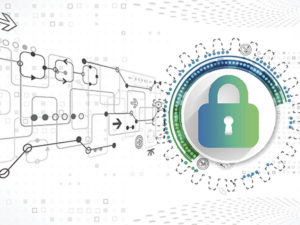The digital transformation of the modern world has brought with it numerous benefits and opportunities, but it has also created new and complex cybersecurity risks.
The digital transformation of the modern world has brought with it numerous benefits and opportunities, but it has also created new and complex cybersecurity risks. As organizations rely more heavily on digital systems and data, the threat of cyber attacks is greater than ever.
In this article, we will explore the importance of cybersecurity in the age of digital transformation and how organizations can protect themselves from the ever-growing threat of cyber attacks.

Why Cybersecurity Matters
-
Protecting Sensitive Data
Cybersecurity is essential for protecting sensitive data and information, such as personal, financial, and intellectual property. A breach of this information can result in significant harm to individuals, organizations, and society as a whole.
-
Preventing Financial Losses
Cyber attacks can result in financial losses, from direct theft to the cost of recovery and mitigation efforts. The economic impact of a cyber attack can be significant, particularly for small and medium-sized businesses that may not have the resources to recover from such an event.
-
Maintaining Reputation
A cyber attack can severely damage an organization’s reputation and compromise the trust of its customers and stakeholders. Reputational damage can take years to repair and may result in long-term business losses.
-
Compliance with Regulations
Cybersecurity is often a requirement of various regulations and standards, such as the General Data Protection Regulation (GDPR) and the Payment Card Industry Data Security Standard (PCI DSS). Organizations must comply with these regulations or face significant fines and legal consequences.
-
Ensuring Business Continuity
Cybersecurity is critical for ensuring business continuity, as cyber attacks can cause significant disruption to operations and impact the ability to deliver services and products. This can result in lost revenue, frustrated customers, and a damaged reputation.
How to Improve Cybersecurity in the Age of Digital Transformation
-
Implement Strong Passwords and Authentication
Strong passwords and multi-factor authentication are essential for preventing unauthorized access to sensitive data and systems. Encouraging employees to use secure passwords and regularly update them can significantly reduce the risk of a breach.
-
Conduct Regular cybersecurity Assessments
Regular security assessments and vulnerability scans help organizations identify and address security weaknesses and potential threats. These assessments should be performed by trained professionals who can provide recommendations for improvement and prioritize the most critical issues.
-
Update Software and Systems
Keeping software and systems up-to-date is critical for preventing known vulnerabilities from being exploited by attackers. Regular updates and patches can help to prevent exploits and minimize the risk of a breach.
-
Provide Employee Training on cybersecurity
Employee training and awareness programs are essential for promoting safe and secure behaviors and reducing the risk of human error. Employees should be trained on the importance of cybersecurity and best practices for avoiding attacks, such as avoiding phishing scams and using secure networks.
-
Work with Cybersecurity Professionals
Working with cybersecurity professionals can help organizations implement best practices, stay up-to-date with the latest threats, and respond effectively to security incidents. Cybersecurity professionals can provide expert advice, guidance, and support for organizations looking to improve their security posture and protect against cyber attacks.
Challenges in Improving Cybersecurity
-
Lack of Awareness
Despite the growing threat of cyber-attacks, many organizations still need to gain awareness of the importance of cybersecurity. This lack of understanding can lead to poor decision-making and insufficient investment in cybersecurity measures.
-
Complex and Evolving Threat Landscape
The threat landscape is constantly evolving, with new threats emerging on a regular basis. Staying ahead of the curve and understanding the latest threats can be challenging, particularly for smaller organizations that may not have the resources or expertise to deal with the latest threats.
Benefits of Cybersecurity for Businesses
Investing in cybersecurity measures has numerous benefits for businesses.
- Firstly, it helps to protect valuable data, intellectual property, and sensitive information from falling into the wrong hands.
- Secondly, it reduces the risk of financial loss from cybercrime, as well as reducing the chances of legal and regulatory penalties.
- Finally, it helps to maintain customer trust by demonstrating that their information is secure and that the business takes their privacy seriously.
The Role of Technology in cybersecurity
Technology plays a crucial role in cybersecurity, but it’s important to remember that technology alone is insufficient. A comprehensive security strategy should include a combination of technology, processes, and employee education. The use of firewalls, antivirus software, and encryption can help to prevent cyber-attacks and protect sensitive information, but it’s essential to regularly update these systems and software to ensure that they remain effective against the latest threats.
Conclusion
In conclusion, cybersecurity is essential in the age of digital transformation. With the increasing number of connected devices, sensitive information stored in the cloud, and digital transactions becoming the norm, it’s more important than ever to take the necessary precautions to protect personal and business information. By investing in cybersecurity measures, educating employees, and utilizing technology, companies can reduce the risk of cybercrime and maintain the trust of their customers.
BACK










